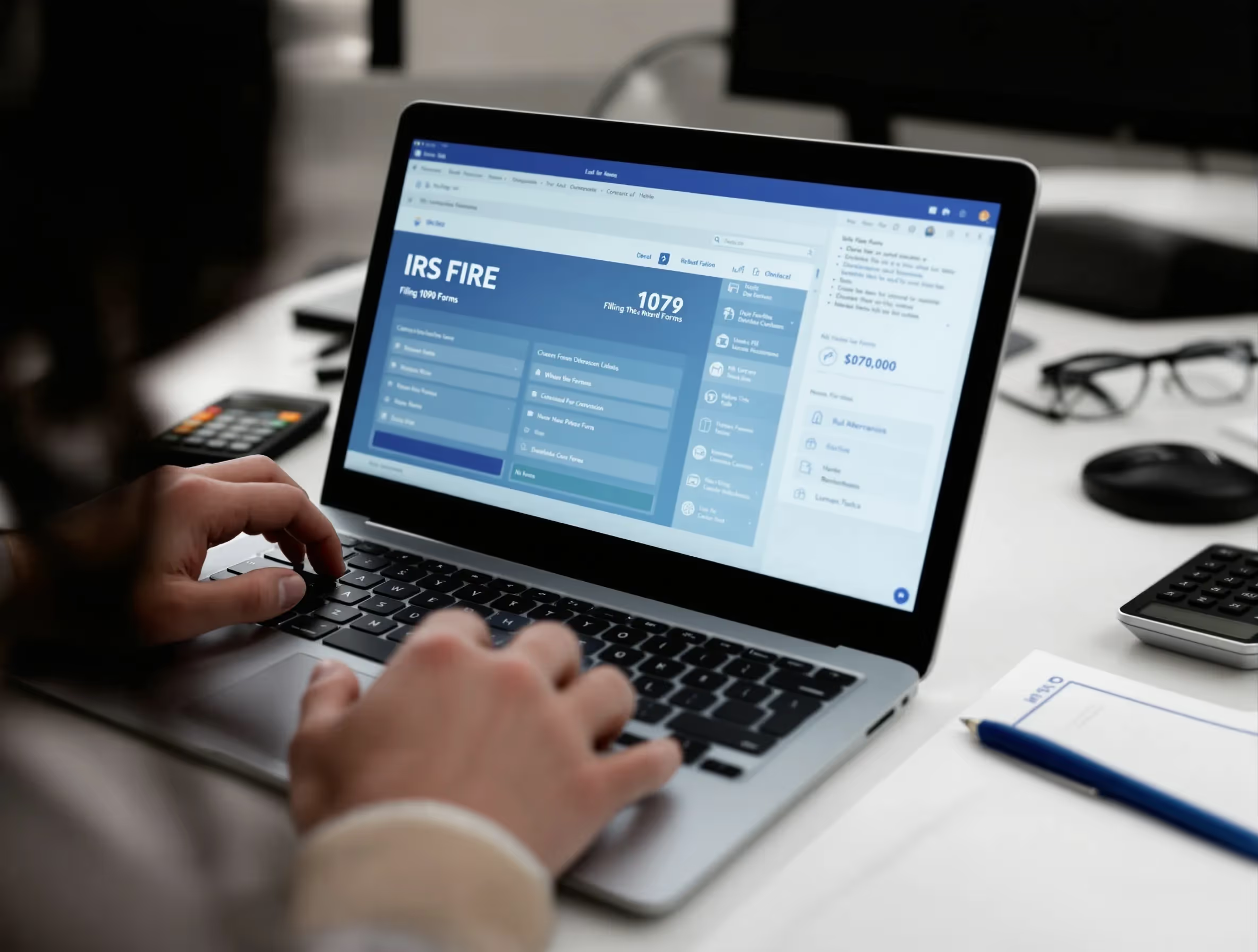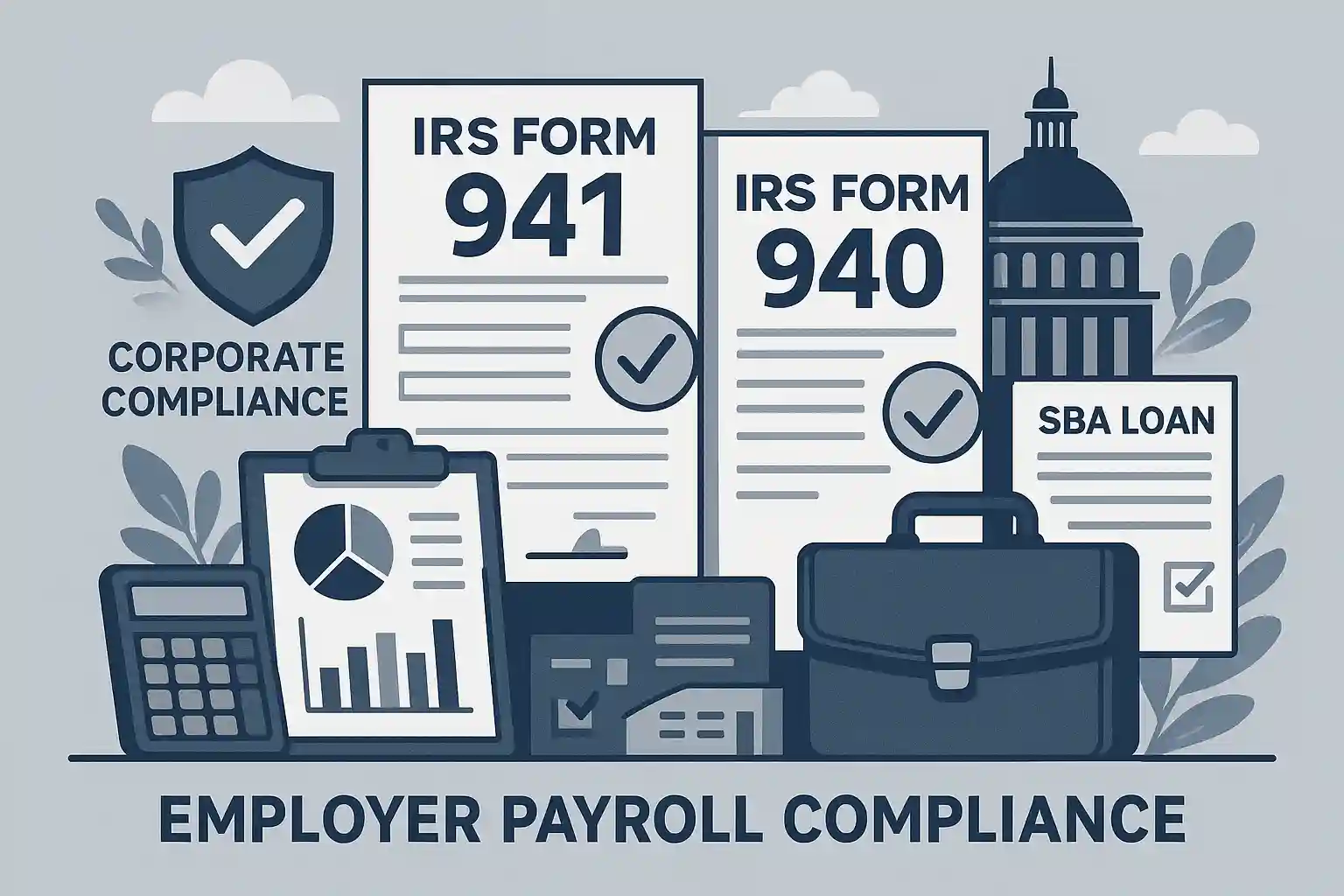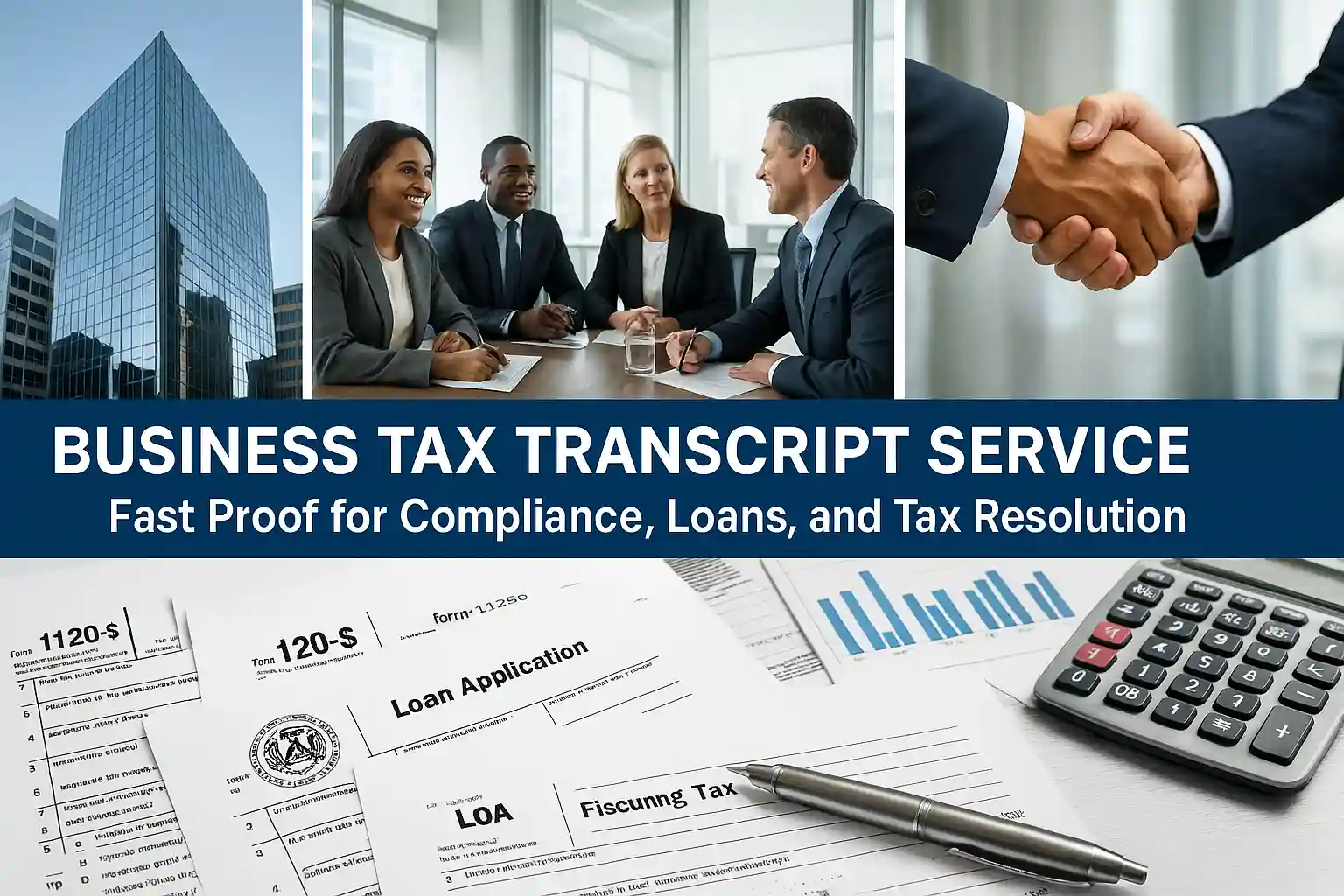IRS Form 2751 Guide: Proposed TFRP Assessment Explained

Form 2751 is an official IRS document that plays a critical role in assessing the Trust Fund Recovery Penalty (TFRP). When a business fails to remit withheld payroll taxes, the IRS may hold specific individuals personally liable. Form 2751 notifies those individuals of a proposed assessment and allows them to either agree to the penalty or challenge it through appeals. Because it carries strict deadlines and significant legal consequences, understanding this form is essential for anyone who receives it.
The Trust Fund Recovery Penalty is one of the IRS’s strongest enforcement tools for unpaid employment taxes. These taxes, often called trust fund taxes, include withheld income tax, Social Security, and Medicare tax from employees’ wages. When these amounts are not turned over to the IRS, the agency can personally pursue responsible persons—such as business owners, officers, or payroll administrators. Form 2751 clarifies liability and establishes a required response period of 60 days (75 days if the notice is addressed outside the United States).
This guide provides a clear, step-by-step explanation of Form 2751, the TFRP process, and the choices available to taxpayers. Breaking down responsibilities, deadlines, and resolution options aims to help readers understand their rights, avoid common mistakes, and take informed action if they receive this form.
What Is Form 2751 and the Trust Fund Recovery Penalty (TFRP)?
Form 2751, also known as the Proposed Assessment of Trust Fund Recovery Penalty, is the document the IRS uses to notify individuals of personal liability for unpaid trust fund taxes. It accompanies IRS Letter 1153, which explains the agency’s intent to assess the penalty. Taxpayers who receive this form must act quickly—either by signing to accept responsibility or by filing a protest to dispute the assessment. Ignoring the notice does not eliminate the liability; it only removes the opportunity to appeal before the penalty is assessed.
The Trust Fund Recovery Penalty (TFRP) is authorized under Internal Revenue Code (IRC) Section 6672. It applies when a business withholds certain employment taxes from employees’ wages but fails to send those payments to the IRS. These withheld amounts are considered “trust fund” taxes because the employer holds them in trust for the government until they are remitted. If the IRS determines that a responsible person willfully failed to pay, it may assess the penalty equal to the unpaid trust fund taxes. For additional details, see the IRS explanation of employment taxes and the Trust Fund Recovery Penalty.
It is essential to distinguish trust fund taxes from other types of business tax obligations:
- Trust fund taxes (subject to TFRP):
- Federal income tax withheld from employee wages.
- Employee’s portion of Social Security and Medicare taxes.
- Withheld payroll taxes and certain excise taxes.
- Non-trust fund taxes (not subject to TFRP):
- Employer portion of Social Security and Medicare taxes.
- Federal unemployment tax (FUTA).
- Penalties, interest, and state income taxes.
This distinction matters because the penalty is assessed only on the employee’s portion of withheld income and payroll taxes. The employer’s share of payroll taxes remains a business liability, but it cannot trigger personal liability under the TFRP.
Who Can Be Held Responsible for TFRP?
The IRS does not assess the Trust Fund Recovery Penalty against anyone connected to a business. Instead, the penalty applies to individuals the agency defines as responsible persons. A responsible person has the authority and duty to collect, account for, and pay employment taxes and willfully fails to do so. Importantly, the IRS bases this determination on actual control over financial decisions, not simply on job titles.
Examples of individuals who may be considered responsible persons include:
- Business owners and partners: Owners or partners who control financial affairs and make decisions about how to pay payroll taxes.
- Corporate officers: Presidents, treasurers, or CFOs who oversee finances or have check-signing authority.
- Payroll administrators: Individuals who manage payroll tax payments and can prioritize which bills are paid.
- Bookkeepers and accountants: Staff with direct access to tax payments and bank accounts who influence how funds are used.
- Family members involved in business operations: Relatives who handle finances or act on behalf of the company.
- Third-party payroll providers: Outside firms or individuals that manage payroll tax payments, if they willfully fail to remit withheld taxes.
To establish responsibility, the IRS typically conducts a Form 4180 interview, a formal questionnaire where potential responsible persons answer detailed questions about their roles, authority, and financial control. The information gathered is critical in determining who may be held personally liable for unpaid payroll taxes.
Being named a responsible person is serious, as it means the IRS may pursue your personal assets—including wages, bank accounts, and property—to collect unpaid trust fund taxes. Understanding who qualifies helps taxpayers prepare for IRS inquiries and build an appropriate defense.
Understanding “Willfulness” in TFRP Cases
In addition to proving that someone is responsible, the IRS must also show that the individual acted willfully before assessing the Trust Fund Recovery Penalty. Willfulness does not require intent to defraud the government or malicious behavior. Instead, it means that the person knew about the unpaid trust fund taxes and either intentionally disregarded the obligation or acted recklessly, indifferent to whether the taxes would be paid.
The IRS considers actions willful if a person with significant control over the company’s finances makes a conscious decision that results in unpaid employment taxes. Common examples of willful behavior include:
- Paying other creditors first: Choosing vendors, rent, or loans instead of paying withheld payroll taxes to the IRS.
- Continuing to pay wages: Issuing employee paychecks without setting aside funds for Social Security, Medicare, and income tax withholding.
- Ignoring IRS notices: Failing to act after receiving letters from the Internal Revenue Service about outstanding taxes.
- Not correcting known issues: Allowing payroll tax problems to continue even after discovering missed or late payments.
On the other hand, not every failure to pay taxes is willful. Examples of situations that may not be considered willful include:
- Accidental mistakes: bookkeeping errors that caused a shortfall.
- Lack of authority: when someone without check-signing authority or financial control is named in error.
- Following superior orders: if an employee could not make payroll tax payments.
Understanding the concept of willfulness is critical because it determines whether the IRS can hold a person personally liable. If the IRS believes someone intentionally disregarded payroll tax obligations, that individual can face a penalty equal to 100% of the unpaid withholding taxes.
Purpose of Form 2751 and When It Should or Should Not Be Signed
Form 2751 is the official notice that the IRS intends to assess a Trust Fund Recovery Penalty (TFRP) against you. It is always accompanied by IRS Letter 1153, which explains the proposed assessment and your appeal rights. The form has two primary purposes: it provides legal notice of the penalty amount and affected tax periods and allows you to agree or disagree with the proposed assessment.
You can sign the form to accept liability if you agree with the IRS’s determination. Signing confirms that you are responsible and accept personal liability for the unpaid trust fund taxes. However, signing also means you waive your right to contest the penalty through the IRS Appeals Office. Because of these consequences, taxpayers must weigh their options carefully before signing.
When to Sign Form 2751
You should consider signing Form 2751 if:
- The amounts and periods are accurate: You have reviewed the IRS records and confirmed that the unpaid taxes match the company’s actual liabilities.
- You want to resolve this quickly: Signing may reduce an extended appeals process's uncertainty and legal costs.
- You can arrange payment: Signing makes you personally liable, but it allows you to request an installment agreement or other payment plan.
- The business is closed: If operations have ceased and you acknowledge responsibility, signing may help bring closure.
When Not to Sign Form 2751
You should avoid signing the form if:
- You dispute responsibility: If you believe you were not the person responsible for payroll tax payments, you should not sign.
- You contest willfulness: If the IRS determines you willfully failed to pay, but you believe your actions were not intentional, do not accept the penalty.
- The IRS made errors: If the assessment includes incorrect tax periods, amounts, or names, you should challenge it.
- Other individuals share responsibility: If others had significant control, it may not be fair for you to accept liability alone.
Signing Form 2751 is a serious legal decision. It gives the IRS immediate authority to assess the penalty and begin collection against your personal assets, including your wages and bank account. If you have any doubts, it is best to consult a qualified tax professional before signing.
Key Deadlines, Limitations, and IRS Procedures
Responding to Form 2751 and Letter 1153 is time-sensitive. The IRS enforces strict deadlines, and missing them can eliminate essential rights. Understanding these time limits helps taxpayers avoid losing their opportunity to appeal or negotiate.
Required Response Period
- 60 days: You must respond within 60 days of the mailing date.
- 75 days: If the notice is addressed to you outside the United States, the response period is extended to 75 days.
Failing to act within this timeframe results in a final TFRP assessment, and you lose your appeal rights before the penalty is assessed.
Collection Due Process (CDP) Deadlines
- After assessment, you may receive a CDP notice before the IRS files a lien or levy.
- You have 30 days from the date of the CDP notice to request a hearing with the Appeals Office.
- Missing this window allows the IRS to conduct enforced collection actions against your personal assets.
Assessment Statute Expiration Date (ASED)
- Generally, the IRS has three years from the due date of the related employment tax return to assess the penalty.
- Issuance of Letter 1153 extends the statute by at least 90 days, ensuring the IRS can finalize the assessment if you appeal.
- This protects taxpayers and the IRS by keeping the process within a defined timeframe.
Special Rules
- Military service: Active duty may extend response deadlines under the Servicemembers Civil Relief Act.
- Disaster relief: The IRS may grant extra response time in federally declared disaster areas.
- Community property states: Spouses’ assets may be at risk even if only one is responsible.
Meeting these deadlines is critical. Once a proposed assessment becomes final, the IRS can begin collecting from your income, bank account, or other assets.
Step-by-Step Guide to Completing Form 2751
Completing Form 2751 requires accuracy and attention to detail. Because the document establishes your liability for unpaid trust fund taxes, reviewing everything carefully before signing is essential. The following checklist and step-by-step process will help you prepare.
Pre-Completion Checklist
- Read IRS Letter 1153 in full and confirm the proposed assessment details.
- Verify your identity and ensure the form is addressed to the correct person.
- Review the listed tax periods and amounts for accuracy.
- Gather supporting documents such as tax returns, bank records, and payroll information.
- Consider speaking with a tax professional to understand the legal and financial consequences.
How to Complete Form 2751
- Review header information: Please ensure your name, address, and Social Security number are accurate. Errors at this stage could cause processing delays or affect your liability record.
- Check the listed tax periods: Confirm that each quarter or year matches when you had control over payroll tax payments. If any period is incorrect, you should not sign until the issue is resolved.
- Verify tax amounts: Compare the trust fund amounts to the company’s payroll tax returns and payment history. The penalty equals the total unpaid trust fund taxes, including withheld income tax and the employee’s Social Security and Medicare portion.
- Decide whether to sign or protest: signing means you accept personal liability and waive your right to an administrative appeal. If you disagree, you must prepare a timely mailed protest to the IRS Appeals Office before the deadline expires.
- Sign and date the form: Use black or blue ink. If signing in an official capacity, include your corporate title. By signing, you confirm that you are responsible and agree to the proposed assessment.
- Make copies for your records: Retain a complete copy of the signed form and any cover letters you include.
- Submit the form: Mail it to the address provided in Letter 1153 using certified mail with return receipt requested, or deliver it in person to the IRS office listed.
These steps ensure your response is timely, complete, and adequately documented.
What Happens After Filing Form 2751
Once you submit Form 2751, the IRS will process your response and update your case status. The timeline varies, but taxpayers can generally expect several stages after filing.
IRS Processing Timeline
- The IRS revenue officer reviews your signed form within one to two weeks to ensure it is complete.
- You will typically receive Letter 1155, Notice of Agreed Trust Fund Recovery Penalty, confirming that the penalty has been assessed.
- The IRS then updates your tax account to reflect the new liability.
Assessment and Collection
After assessment, the IRS sends a Notice and Demand for Payment. Interest and penalties begin accruing from the assessment date until complete payment. If you cannot pay in full, you may request an installment agreement or other payment plan to manage the debt.
If no payment arrangement is made, the IRS can enforce collection. Actions may include:
- Filing a federal tax lien against your property.
- Levying your bank account or garnishing wages.
- Seizing assets to satisfy outstanding taxes.
If You File an Appeal Instead of Signing
If you disagree with the proposed assessment and file a formal written protest before the deadline, the IRS cannot immediately assess the penalty. Instead, your case is transferred to the Appeals Office for review. During the appeals process, collection is suspended until a determination is made.
Filing Form 2751 signals that the IRS has established your personal liability for unpaid trust fund taxes. Whether you agree to the assessment or choose to appeal, the following steps carry significant financial consequences. Acting quickly and keeping documentation organized is critical to protecting your rights.
Resolution Options If You Disagree with the TFRP
Not every taxpayer agrees with the IRS’s determination of responsibility or willfulness. You have several resolution options if you believe the proposed assessment is incorrect. Acting within the required response period is essential, as failure to respond will result in a final TFRP assessment and immediate collection authority.
1. File a Formal Written Protest
The IRS requires a formal written protest if the penalty exceeds $25,000 for any tax period. This protest must include your identifying information, a statement of the disputed issues, legal arguments supporting your position, and a declaration that the facts are accurate. Filing a proper protest ensures the IRS Appeals Office reviews your case before assessment. For official instructions, see the IRS guidance on preparing a request for appeals.
2. Submit a Small Case Request
If the proposed penalty is $25,000 or less per period, you may file a simplified small case request instead of a formal protest. This process requires fewer details but still preserves your appeal rights.
3. Negotiate a Payment Plan
If you agree you are liable but cannot pay in full, you can request an installment agreement. When setting monthly payments, the IRS considers your income, expenses, and ability to pay. A properly arranged payment plan can prevent aggressive collection actions against your personal assets.
4. Consider an Offer in Compromise (OIC).
An Offer in Compromise may allow you to settle the penalty for less than the full amount if paying the full balance would create economic hardship. The IRS reviews your financial condition, assets, and income before deciding whether to accept.
5. Request Currently Not Collectible (CNC) Status
If paying would prevent you from meeting basic living expenses, you may request CNC status. This temporarily suspends IRS collection activity, though the debt continues to accrue interest until resolved or until the Collection Statute Expiration Date (CSED) runs out.
Each option carries different requirements and consequences. Choosing the right strategy depends on the size of the penalty, your financial situation, and the strength of your defense. Consulting a qualified tax professional can help you select the best path forward.
Common Mistakes to Avoid and How to Handle Errors
Handling Form 2751 and the Trust Fund Recovery Penalty is complex, and mistakes can worsen the situation. Many taxpayers unintentionally give up rights or increase their tax liability because they do not fully understand the process. The following are common errors and ways to prevent them.
1. Signing Without Understanding the Consequences
Some taxpayers sign Form 2751 without realizing it makes them liable for unpaid trust fund taxes. Once signed, the IRS can collect from your income, bank account, or property. Always review the form carefully and consult a tax professional before agreeing.
2. Missing the Required Response Period
Failing to respond within 60 days (75 days if outside the U.S.) results in an automatic TFRP assessment. At that point, you lose the ability to file a timely protest with the Appeals Office. Mark deadlines immediately and send responses using certified mail to prove timely filing.
3. Filing an Incomplete Protest
A protest that is missing required details or supporting documents may be rejected. Ensure your protest includes the facts, the disputed issues, legal authority, and your signature. Providing a complete record strengthens your defense.
4. Poor Documentation Practices
Not keeping payroll records, tax returns, or correspondence with the IRS weakens your case. Maintain all financial records, withheld payroll tax details, and evidence of who controlled payroll tax payments. This documentation helps establish responsibility.
5. Mishandling IRS Communications
Providing inconsistent or casual responses to a revenue officer can harm your case. Always prepare before meetings or interviews, especially when completing Form 4180. Follow up in writing so there is a clear record of your statements.
Avoiding these errors can protect your appeal rights and improve your chances of reducing or eliminating the penalty. Careful planning and professional guidance are the best defenses against costly missteps.
Frequently Asked Questions
What happens if I ignore Form 2751?
If you ignore Form 2751, the IRS will proceed with a proposed assessment and finalize the Trust Fund Recovery Penalty. Once assessed, the IRS can collect from your personal assets, including wages, bank accounts, or property. Ignoring the notice also means losing your appeal rights, making it harder to dispute responsibility or resolve the unpaid employment taxes fairly.
Can I negotiate a reduced penalty amount?
Form 2751 itself does not allow you to negotiate a reduced penalty. By signing, you agree to the complete TFRP assessment. To reduce the balance, you must either file a formal written protest during the required response period or, after assessment, explore settlement alternatives like an offer in compromise or an installment agreement based on your financial situation.
Does Form 2751 apply to sole proprietors?
Generally, sole proprietors are already personally liable for their business tax debts, so the Trust Fund Recovery Penalty is not typically applied. However, if a sole proprietor uses a payroll provider and fails to ensure withheld payroll taxes are remitted, the IRS may still issue Form 2751. Responsibility depends on who had significant control over payroll tax payments and compliance.
How does community property law affect TFRP liability?
In community property states, the IRS can collect unpaid trust fund taxes from property jointly owned by spouses, even if only one spouse was assessed as responsible. While the non-responsible spouse may seek relief in some circumstances, the IRS generally considers community property available to satisfy outstanding taxes. Understanding how state law interacts with federal enforcement makes it especially important.
Can bankruptcy eliminate TFRP liability?
Bankruptcy rarely eliminates liability for the Trust Fund Recovery Penalty. Because the penalty represents withheld payroll taxes owed to the government, it is considered a priority debt that usually survives bankruptcy proceedings. While filing may pause IRS collection temporarily, you remain personally liable after the case closes. Alternative options, such as an installment agreement or settlement, are often necessary to resolve the debt.


























































%20A%20Complete%20Guide%20for%202025.avif)

























